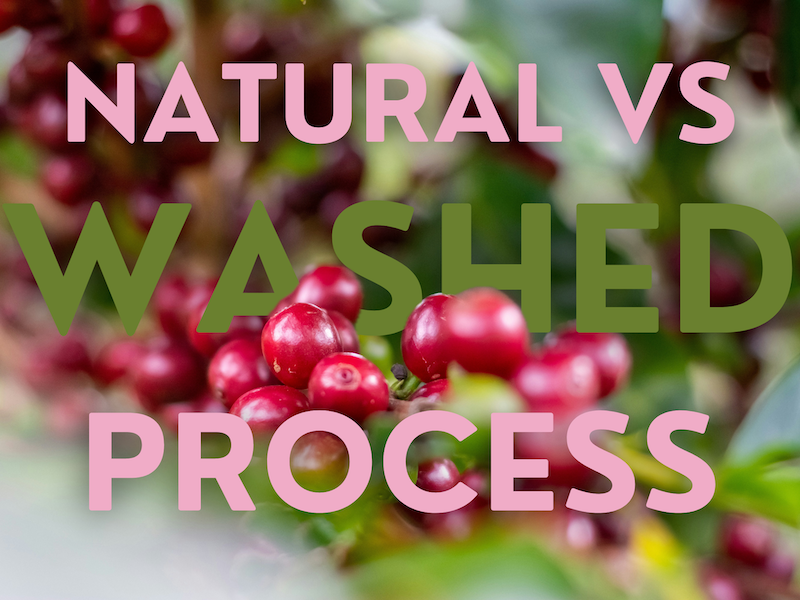Table of Contents
Introduction
When it comes to coffee, there's a lot more than meets the eye—especially in the processing methods used to transform coffee cherries into the richness we brew every morning. Let's study the processes of natural and washed coffee, exploring the science behind each method, their cultural significance, and how they shape the taste of your favorite roast.
Natural Coffee: A Taste of Tradition
Natural, sometimes called dry processed, coffee is one of the oldest methods of coffee processing. In this technique, ripe coffee cherries are carefully picked and laid out to dry in the sun, allowing the fruit to naturally ferment around the bean. This process can take several weeks and requires meticulous attention to detail.
The result? A cup of coffee embodied with fruity flavors and a distinct sweetness. The prolonged contact between the bean and the fruit during drying gives natural coffee its signature taste profile, often characterized by notes of berries, chocolate, and even wine.
Washed Coffee: Precision and Cleanliness
On the other hand, washed, or wet processed, coffee involves removing the outer skin and mucilage from the cherries immediately after harvesting. The beans are then submerged in water to ferment, breaking down any remaining mucilage before being thoroughly washed and dried.
This method requires precision and consistent monitoring to ensure consistency in flavor. Washed coffee tends to have a cleaner, brighter taste compared to natural coffee, with floral and citrus notes shining through. The shorter drying time also contributes to a crisper acidity in the cup.
Scientific Insight
The science behind the natural and washed coffee processing methods lies in the fermentation process and its impact on the chemical composition of the beans.
In natural coffee processing, the intact cherries are left to dry in the sun, allowing fermentation to occur within the fruit. During this time, naturally occurring enzymes break down the sugars and acids present in the fruit, leading to chemical reactions that influence the flavor of the beans. This prolonged fermentation period allows for greater interaction between the sugars and acids, resulting in a deeper and more complex flavor profile.
As mentioned earlier, washed coffee processing involves removing the outer layers of the cherry immediately after harvesting, exposing the beans. These beans are then fermented in water tanks. The fermentation process in washed coffee is controlled and shorter compared to natural processing. By removing the fruit before fermentation, washed processing minimizes the influence of external factors on the beans' flavor. This controlled fermentation environment leads to a cleaner taste profile with distinct acidity and floral notes.
In both methods, fermentation plays a primary role in shaping the flavor of the final coffee seed. However, the timing and environment of fermentation differ, resulting in distinct flavor profiles for natural and washed coffee. Natural coffee tends to have a more diverse array of flavors influenced by the fruit's sugars and acids, while washed coffee offers a more refined taste experience, allowing the qualities of the beans to speak.
Cultural and Traditional Influences
Both natural and washed coffee processing methods have deep cultural and traditional roots in coffee-growing regions around the world. In Ethiopia, the birthplace of coffee, the natural process is the standard, with farmers highly valuing the fruity complexity it gives to their beans.
Meanwhile, in Central and South America, where washed coffee is king, the focus is on producing a bright, clean profile that showcases the inherent qualities of the beans.
Whether it's the rich, fruity notes of a natural coffee or the crisp acidity of a washed coffee, each method offers a unique and distinct experience. Remember, there's no right or wrong choice when it comes to coffee—just different paths to great coffee!
Other Processing Methods
attribution: The Barista Institute
Anaerobic Fermentation
Anaerobic fermentation, meaning oxygen-free, is a relatively new method gaining popularity, especially among high-end coffees like competition blends. Similar to the washed process, anaerobic fermentation occurs in fully sealed, oxygen-deprived tanks. While still experimental, coffees processed this way often boast wild, unexpected, and complex flavors.
Carbonic Maceration
Adapted from winemaking, carbonic maceration involves fermenting whole cherries, breaking down the fruit flesh's cell walls from the inside out. This method infuses the beans with vibrant flavors like red wine, whisky, banana, and bubblegum during fermentation. The resulting cup yields incredibly diverse and bold flavors.
Giling Basah
Translating to "wet hulled" in Indonesian, Giling Basah is a process primarily found in Indonesia. Similar to the washed method, beans are dried to 30-35% moisture content (compared to 11-12% in the washed process). After initial drying, the parchment is removed, and the beans are dried again until ready for storage. Giling Basah yields earthy flavors like wood, mustiness, spice, and tobacco, although it's less favored among coffee professionals.


 Author: Steve Simmons
Author: Steve Simmons











